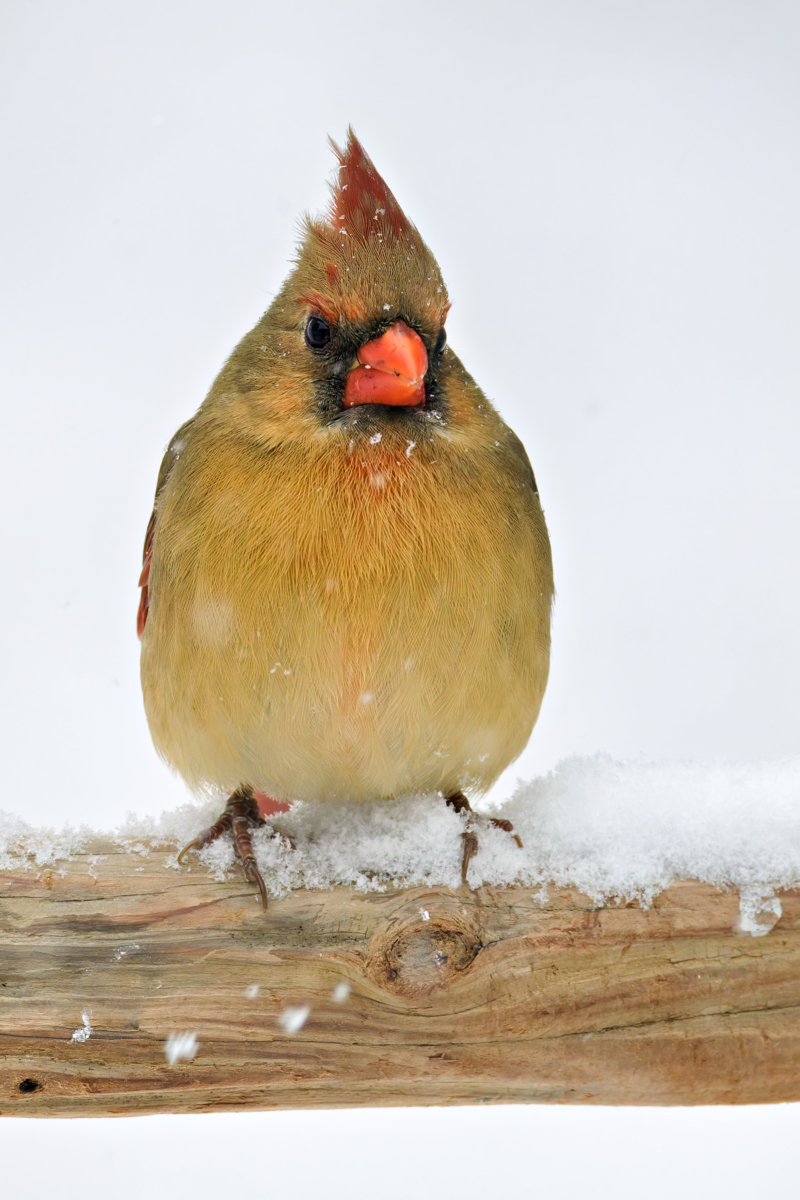It snowed here in Arkansas yesterday (January 9), and by the looks of it, we got quite a bit. I’ll measure it once the sun’s up, but for now, I’m enjoying the winter wonderland. The snow blankets everything in a pristine white, softening the landscape and creating a peaceful, magical atmosphere. When the snow started falling, I put out plenty of birdseed in my feeders, and the yard quickly filled with birds. Naturally, I grabbed my camera, sat on the deck, and spent hours photographing these beautiful creatures against the snow-covered backdrop.
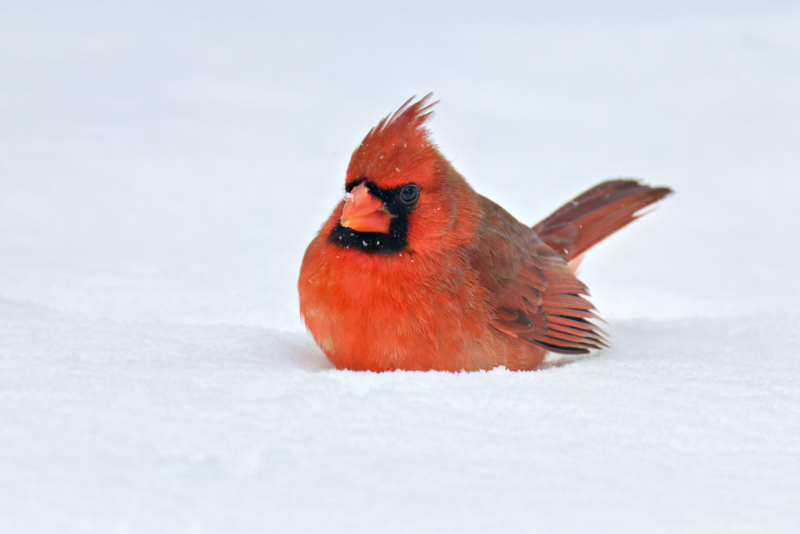
I’m sharing some of my favorite photos in this post. Each image captures the birds braving the cold, and one photo even features a special visitor, a Harris’s Sparrow.
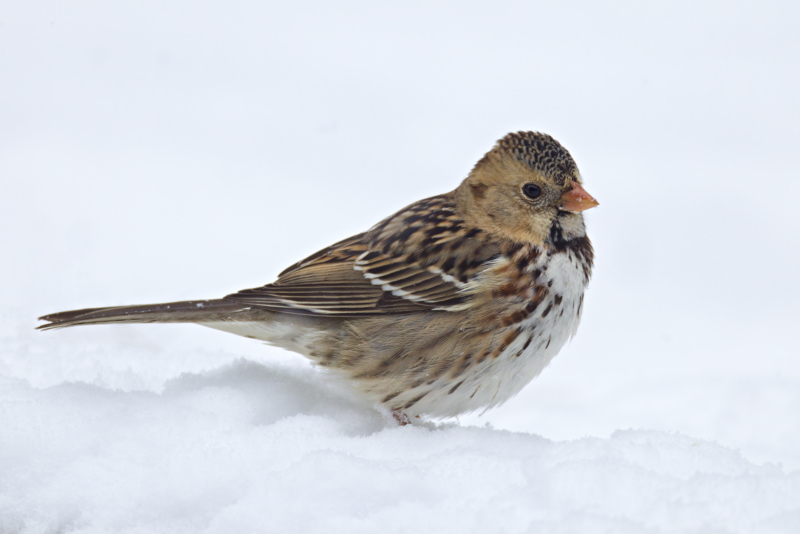
Harris’s Sparrow: A Special Snow Day Visitor
The Harris’s Sparrow (Zonotrichia querula) is North America’s largest sparrow and a striking winter visitor in Arkansas. While they’ve visited my yard before, this is the first time I’ve seen one here this season, making its appearance during the snow extra special.
Key Features
- Size and Appearance: At 6.7–7.9 inches long, it’s a big sparrow with a distinctive black hood and bib, pink bill, and white belly streaked with dark markings. Immature birds have a brown face and a less defined black bib.
- Behavior: These sparrows often forage on the ground, particularly near brushy areas or woodland edges. They’re not shy and will visit feeders with black oil sunflower seeds or millet.
Habitat and Conservation
Harris’s Sparrows are typically found in brushy fields, woodland edges, and hedgerows during the winter months. Snow cover can make foraging more challenging, often driving them to feeders or areas where seeds are more accessible. In Arkansas, they’re more often recorded in the northwestern part of the state. However, like many bird species, they face threats. Listed as “Near Threatened,” their population has been declining due to habitat loss, pesticide use, and predation.
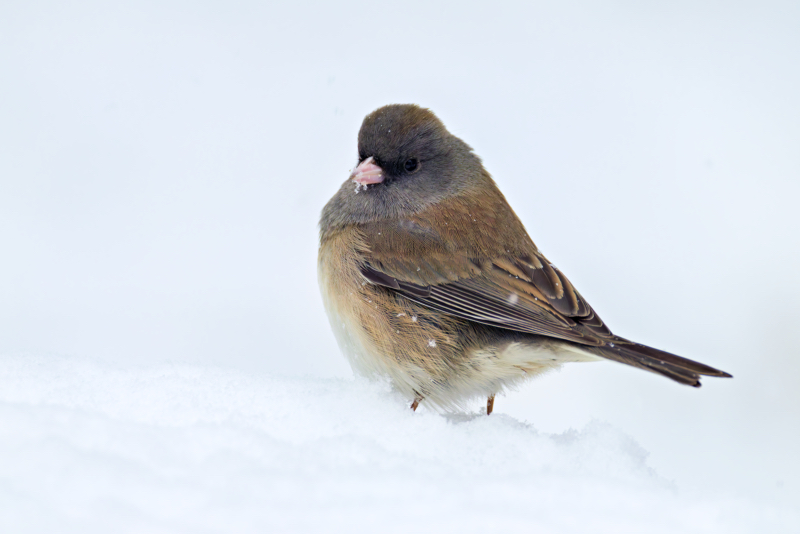
A Day of Snowy Bird Photography
Photographing birds in the snow presents unique challenges, but it’s worth the effort. The contrast of bright plumage against the white snow creates striking images. I watched as a Dark-eyed Junco landed on the snow-covered ground, its soft gray and white feathers blending perfectly with the icy surroundings. The Harris’s Sparrow, with its sharp black markings, stood out beautifully against the snowy backdrop.
I’m sharing some of my favorite photos from the day. You’ll see the variety of birds that visited my feeders, including cardinals, Dark-eyed Juncos, and the stunning Harris’s Sparrow.
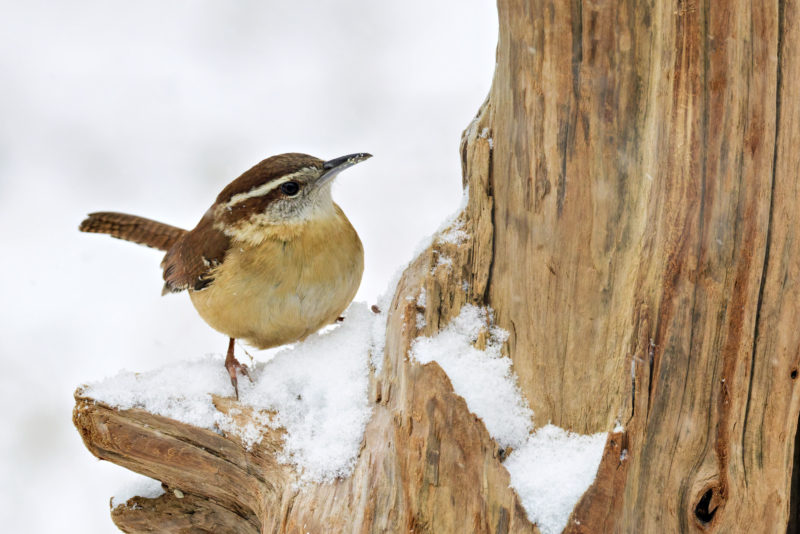
Final Thoughts
Snowy days don’t happen often in Arkansas, but they bring wonderful opportunities to observe and photograph birds. I encourage you to set out some feeders, grab your camera, and see what visitors the snow brings to your own yard. You might be surprised by the beauty you’ll witness. The Harris’s Sparrow was the highlight of the day, but each bird added its charm to the snowy scene. If you’ve had snow in your area, it’s a great time to enjoy the wildlife and maybe capture a few photos of your own.
Let me know which photo is your favorite in the comments!
